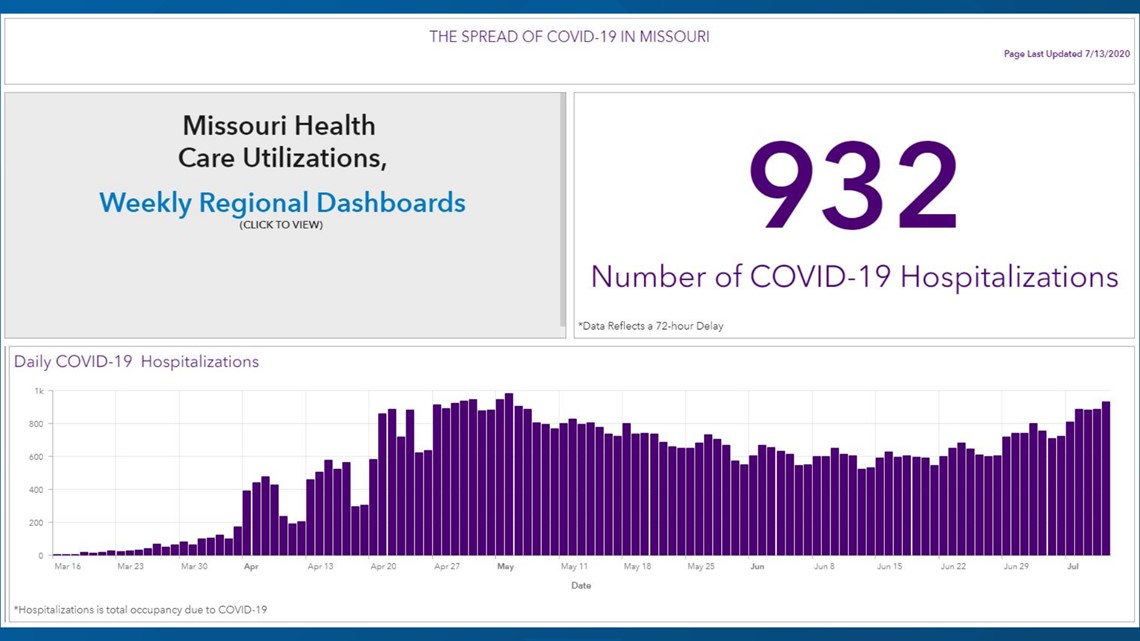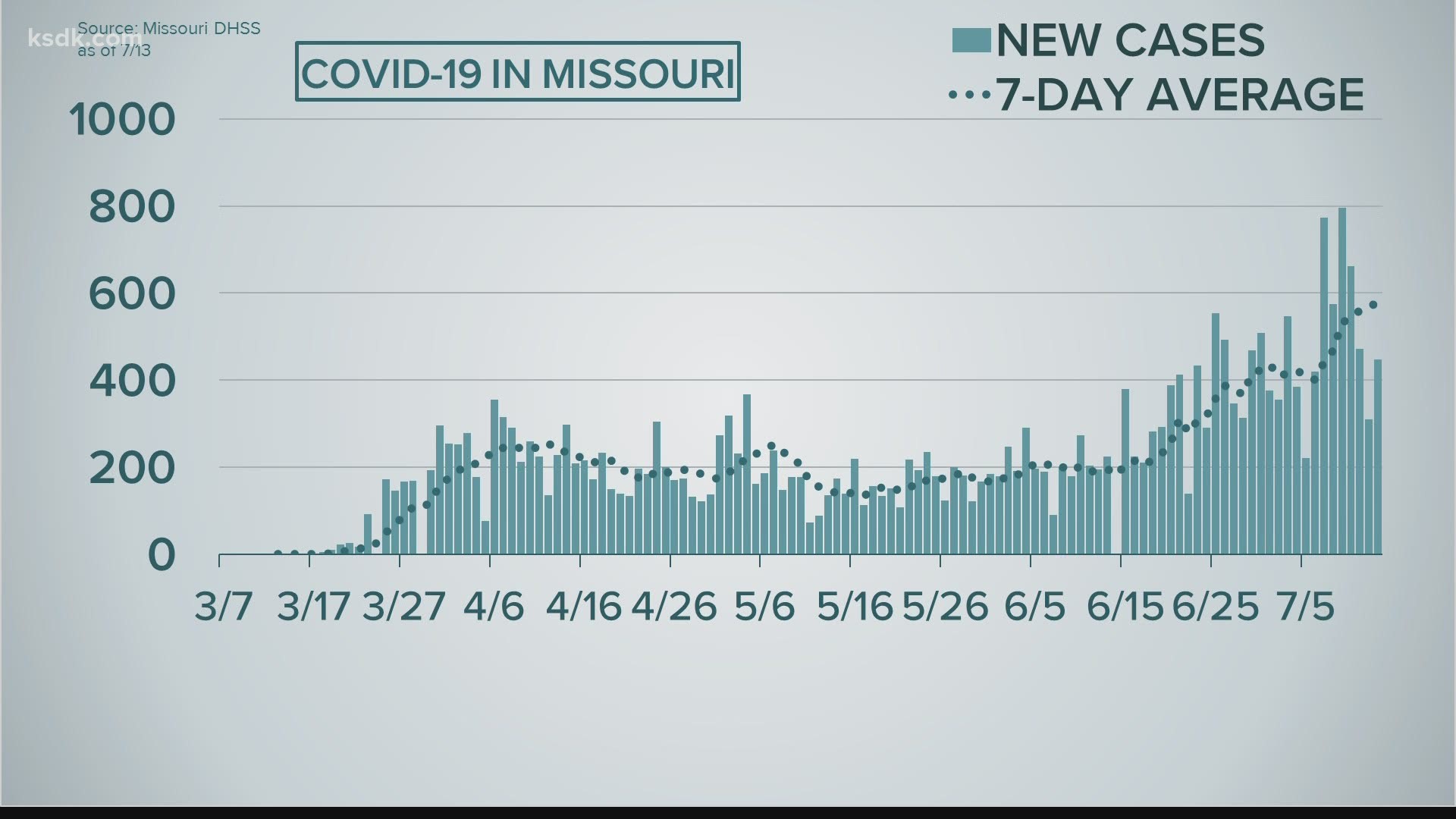ST. LOUIS — The leader of the St. Louis Metropolitan Pandemic Task Force said they are seeing the largest number of new cases out of St. Charles County, which he said is due, in part, to increased testing and loosened restrictions.
When asked if the county was becoming the biggest hot spot in the area, Dr. Alex Garza said that's where they are seeing the highest increase in new cases. He said he believes the increase is for a similar reason to the rest of the state and St. Louis area.
"So, relaxation of those restrictions that were in place, and again, I think we got lulled into a false sense of security by thinking the virus has either gone away or not as dangerous as we thought it had been," Dr. Garza said Monday. "So now it's seeing a resurgence because of all of those things, unfortunately."
According to the St. Charles County Health Department dashboard, the county has reported 705 new cases over the last 14 days, a 418% increase from the previous 14 days.


You can watch Monday's briefing in the player below or on the task force Facebook page:
Here are the latest numbers from task force hospitals on Monday:
- New hospital admissions (data lagged two days) decreased – from 36 yesterday to 26 today.
- The seven-day moving average of hospital admissions (data lagged two days) increased – from 27 yesterday to 28 today.*
- The seven-day moving average of hospitalizations increased from 173 yesterday to 175 today. *
- Inpatient confirmed COVID positive hospitalizations increased - from 180 yesterday to 182 today.
- Inpatient suspected COVID positive hospitalizations decreased – from 141 yesterday to 125 today.
- The number of confirmed COVID positive patients in the ICUs increased – from 45 yesterday to 49 today.
- The number of confirmed COVID positive patients on ventilators increased – from 23 yesterday to 26 today.
- Across the system hospitals, 19 COVID-19 patients were discharged yesterday, bringing the cumulative number of COVID-19 patients discharged to 3,202.
*These numbers have been updated to reflect the true number of daily admissions. There was a delay in reporting some test results leading to the increase in reported hospital admissions. This, in turn, affected the seven-day moving average of admissions.
The Missouri Department of Health and Senior Services reported 447 new COVID-19 cases in the state Monday and more than 10,000 new tests. It was the third day in a row that the state reported more than 10,000 new tests.
The state reported a record 19,725 new tests on Saturday, but that was due in part to the state not updating its testing count the previous day.
The state also reported 14 new deaths Monday, bringing the total reported by the Department of Health and Senior Services to 1,083.
Statewide hospitalization data increased again Monday. The state said a total of 932 people were hospitalized across the state on July 10. The data is lagged three days to ensure accuracy. The total reported for July 10 is the highest the state has reported since it peaked at 984 hospitalizations on May 5.


While local and statewide cases and hospitalizations are ticking up, many have touted that the number of deaths has fallen and leveled out. While, many younger people, who are less likely to die from the virus, are testing positive, may experts said an increase in cases yields itself to an increase in deaths.
"The country is starting to see a rise in deaths across the country, which is catching up to those cases," Dr. Garza said Monday. "We don't want to see those counts rise here."
While there hasn't been a second rise in deaths for our area, Dr. Garza said a rise in hospitalizations is concerning.
"We get concerned when we see the admissions steadily climbing because we know the admissions is a lagging indicator," Dr. Garza said.
Statewide data for both Missouri and Illinois also show a lag between the trend in positive cases and the trend in deaths, deaths just trail behind in timing.
For a full county-by-county breakdown of cases in the state, use our interactive map. Some of the local county numbers come from local health departments and may not match data from the DHSS.

